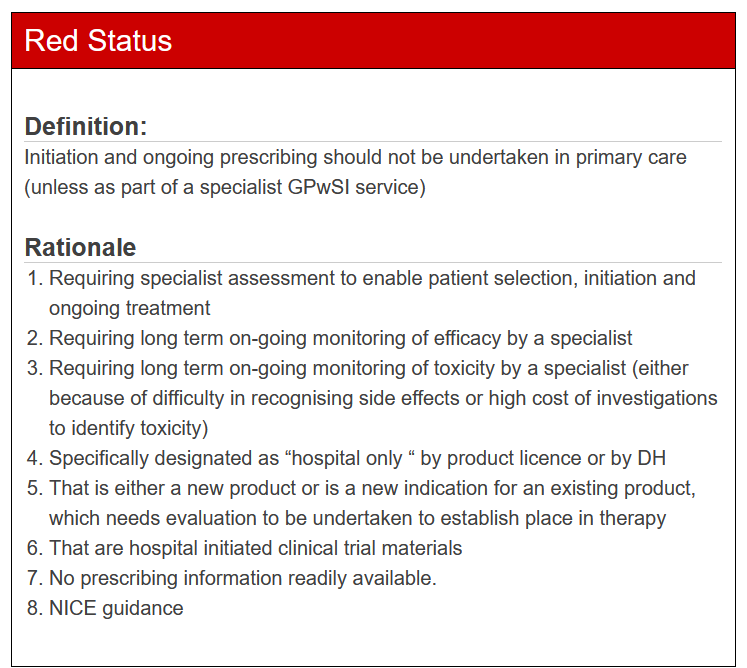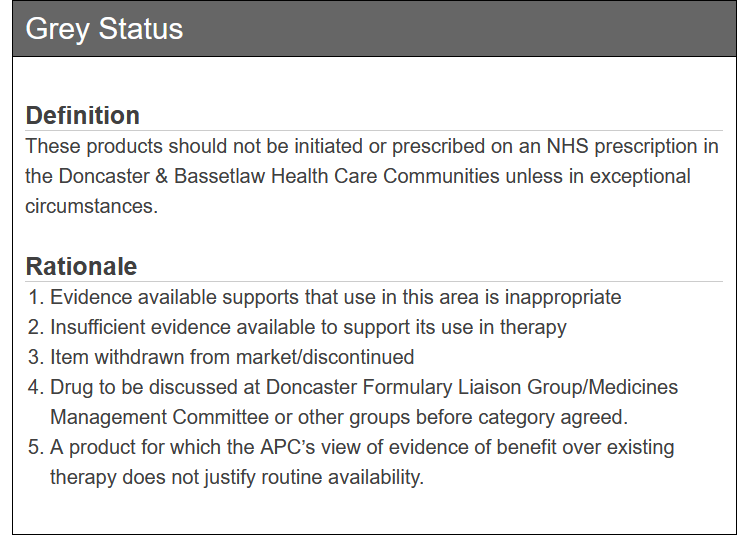
In Doncaster’s primary care setting, medications are categorised using a Traffic Light System (TLS) to delineate prescribing responsibilities and ensure optimal patient care. This system aids healthcare professionals in understanding their roles concerning various medications, promoting safe and effective prescribing practices.
Red-listed medications are those that should only be prescribed by specialist clinicians. These drugs typically require specialist assessment for patient selection, initiation, and ongoing monitoring due to their complexity, potential risks, or specific indications. Prescribing these medications in primary care is generally discouraged unless exceptional circumstances arise.
Key Characteristics of Red-Listed Medications:
Specialist Initiation and Monitoring: These medications often necessitate initiation and continuous oversight by healthcare professionals with specialized expertise to manage potential adverse effects and ensure therapeutic efficacy.
Hospital-Only Restrictions: Some red-listed drugs are designated as “hospital only” by their product license or by the Department of Health, limiting their prescribing to hospital settings.
It’s essential for primary care practitioners to consult the Doncaster Medicines and Products Directory for the most current classifications and guidelines regarding red-listed medications.
Grey-listed medications are those that should not be initiated in primary care settings unless exceptional circumstances apply. These drugs may lack sufficient evidence supporting their use, have limited therapeutic value, or be subject to specific commissioning restrictions.
Key Characteristics of Grey-Listed Medications:
Limited Evidence or Efficacy: Some grey-listed drugs may have insufficient evidence to support their use in therapy, making them less favourable for initiation in primary care.
Commissioning Restrictions: Certain medications may be subject to specific commissioning arrangements that restrict their use within the primary care sector.
Review and Evaluation: Medications in the grey list are under continuous evaluation, and their status may change based on emerging evidence or changes in commissioning policies.
Primary care practitioners are advised to review the status of any grey-listed medications regularly and consult with specialists when considering their use. The Doncaster Medicines and Products Directory provides detailed information on these classifications.
Understanding the classifications of red and grey-listed medications within Doncaster’s primary care framework is crucial for ensuring that prescribing responsibilities align with clinical expertise and evidence-based guidelines. By adhering to these classifications, healthcare providers can contribute to safe prescribing practices, optimise patient outcomes, and utilize healthcare resources effectively.
Please do not feel forced into prescribing anything that you feel is beyond your competence. If there is a problem arising from use of a drug that you have prescribed, you will be called to answer for your actions.
It is good practice to politely decline, give your reasons why, and provide a suggestion as to who might be able to prescribe it.


Welcome to Doncaster LMC. We use cookies to enhance your experience, analyse site traffic, and personalise content. By clicking 'Accept,' you consent to our use of cookies. You can manage your cookie preferences or withdraw consent at any time by adjusting your settings. For more details, please review our Cookie Policy Learn more